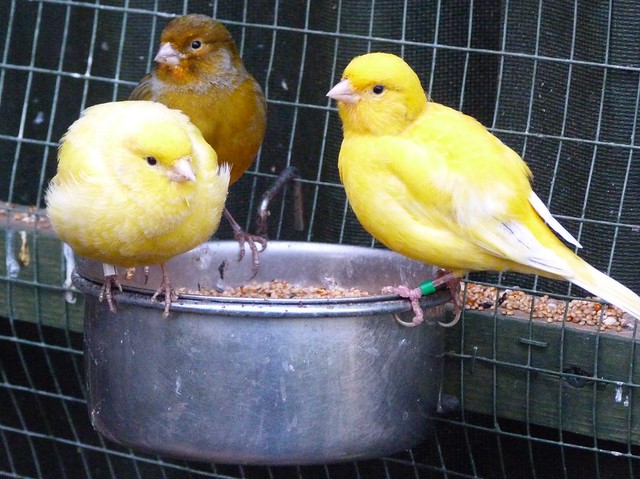(Original Title: Rainforest Birds - Canary)
 |
| Photo by steve p2008 |
Bird Name:
Canary
Latin Name:
Serinus canaria
Status:
Least Concern
Scientific Classification:
Kingdom: Animalia
Phylum: Chordata
Class: Aves
Order: Passeriformes
Family: Fringillidae
Genus: Serinus
Species: S. canaria
General Information:
The wild species is also known as Canary, Island Canary, Tame Canary, and Atlantic Canary. The Domestic Canary has been bred in captivity since the 1600s. They are divided into three main groups: Colorbred Canaries (bred for mutations), Type Canaries (bred for their shape), and Song Canaries (bred for unique song patterns). The word "Canary" is derived from the Latin canaria, "of the dogs", referring to the numerous wild dogs that inhabited the islands.
Physical Description:
The average length of the wild Canary is 12.5 cm, with a wingspan of 20 to 23 cm, and a weight of 15 to 20 gm. They are yellow green, with brownish streaking on their back and wings and have gray and brown in their plumage. The beaks and feet are pale in color. Females are duller in color.
In the case of the domesticated Canaries, there are hundreds of mutations that will have numerous variations in color.
Diet:
The diet in the wild consists of fruits, seeds, and nuts. They have a grove on the inner beak that helps them to break open nuts.
Habitat:
The Canary is native to the Azores, the Canary Islands, and Madeira. It inhabits semi-open areas such as orchards where it nests in shrubs and trees. It resides in elevations from sea level to 1700 m. A number of escaped populations occur on Bermuda, Hawaii, and Puerto Rico.
Reproduction:
Breeding is generally between January and July. Females build the nests in bushes or small trees. Incubation takes about 14 days and the chicks fledge after two weeks.
|

No comments:
Post a Comment